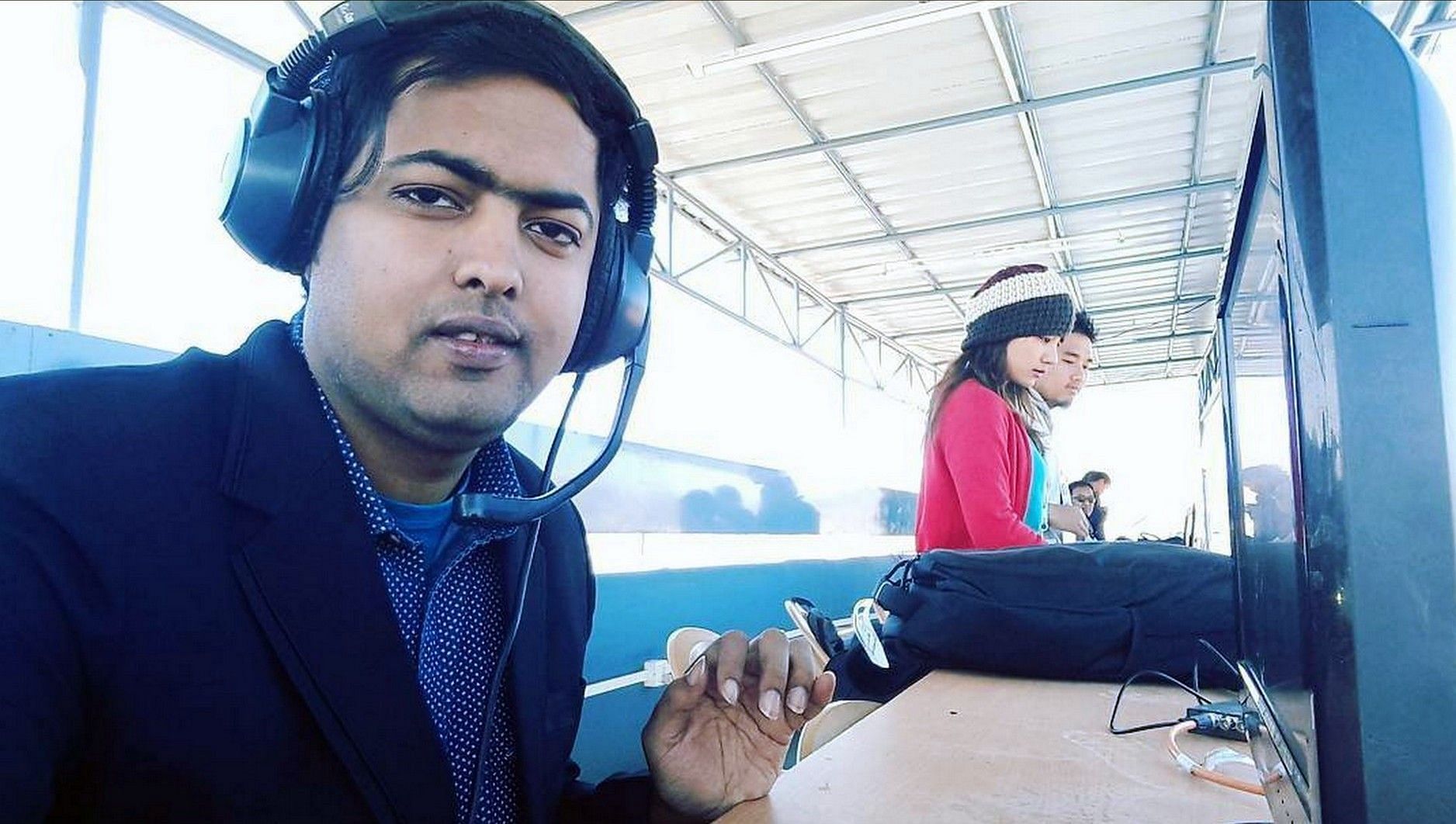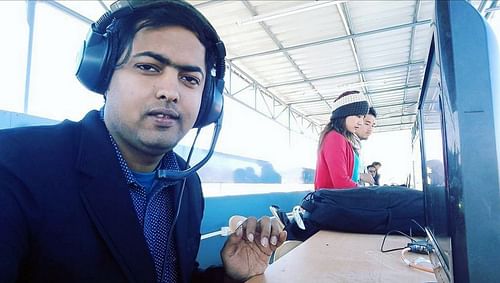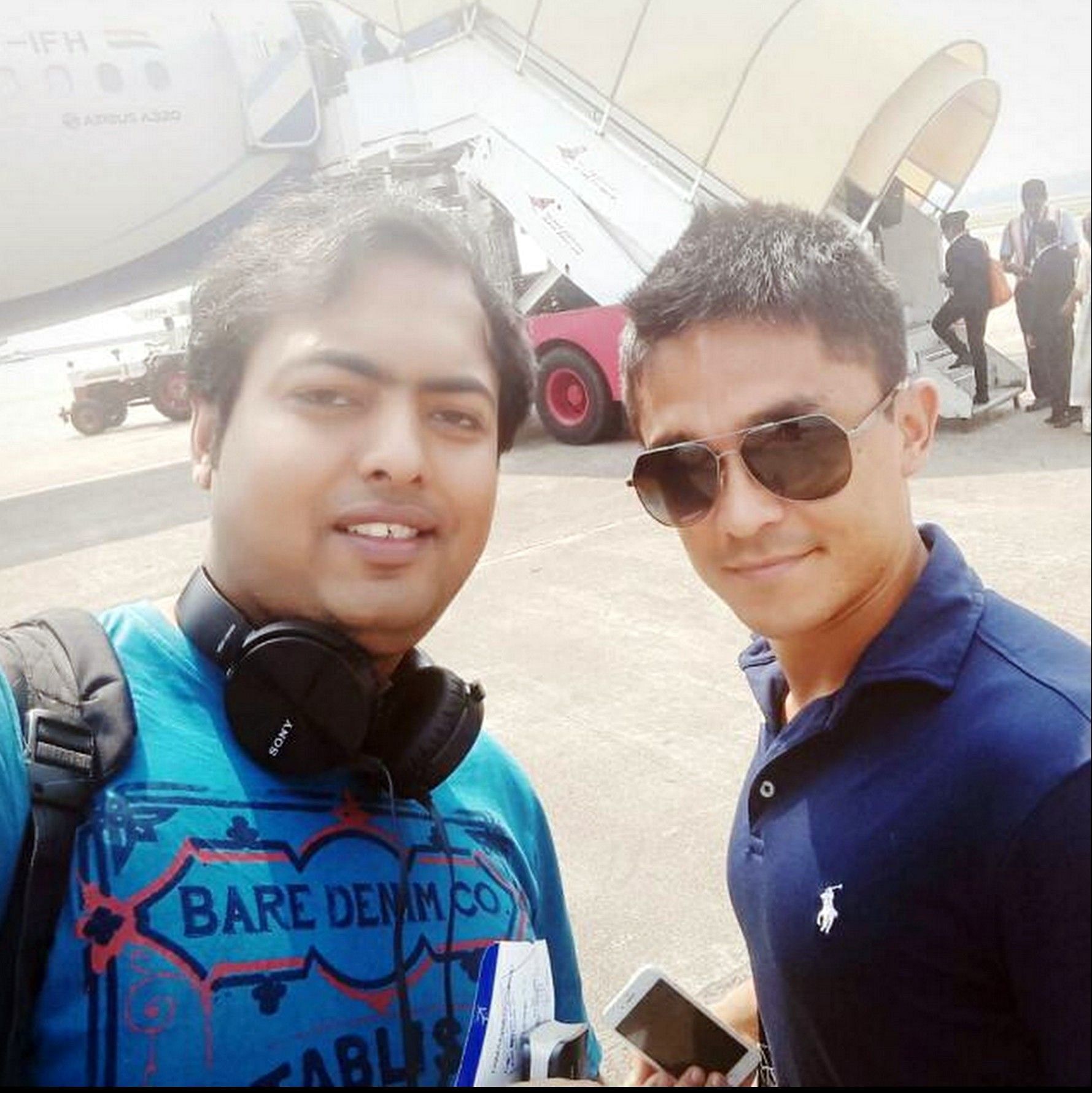
"Indian football is experiencing a boom, there will be ample scope for aspiring commentators" - Sports broadcaster Suman Chakraborty

“You have to be enthusiastic, be accurate and load yourself with facts and then of course take the viewers or listeners with you to the crescendo of the goal-scoring act.”
These words said by legendary British sports broadcaster John Helm during a 2005 interview are taken as gospel by several aspiring commentators.
Just try to remember the finest bits of sports commentary you’ve heard. Why have lines like “Remember the naaame Wayne Rooney!” or “Let’s get readyyyyyy to rumbleeeeee!” achieved cult status? It’s the ecstasy, the “spontaneous overflow of powerful emotions”, as Wordsworth would call it, that makes certain moments special and triggers an adrenaline rush. If that’s the case, sports commentary is synonymous with poetry.
But poetry is generally subjective, whereas a commentator is supposed to be an objective narrator with a mic in hand. This is a glaring dichotomy that is rarely talked about. How can a commentator restrain his joy or agony when his favourite team scores or misses a goal? How does he make sure that his critical faculties are not eclipsed by bias?
According to journalist-turned-commentator Suman Chakraborty, nothing should come in the way of a broadcaster’s credibility with the audience. Chakraborty, who has commentated on nearly 1,000 official football matches so far, opined during a recent conversation with Sportskeeda:
“It’s tough [to remain neutral] because your love for the sport or a team can manifest itself at times. As a commentator, however, you need to be a story-teller, not a fan. Fans watch the game through your eyes, so you are accountable to them. I can’t eat my dinner when my favourite team loses a match. But that’s off the field.”
He also spoke about the burgeoning scope of football broadcast in India, and underlined the challenges that it entails.
On his transition from journalism to commentary
Chakraborty’s foray into broadcasting was a big punt. Hailing from a Bengali middle-class family in West Bengal’s New Barrackpore municipality, he cracked the 2013 State Civil Services Examination with a high rank.
Yet, to the surprise of his family and relatives, he decided to chase his dream of becoming a full-time sports journalist and shunned the lure of Civil Services in favour of a less lucrative profession.
Chakraborty’s breakthrough moment came during the inaugural edition of the Indian Super League (ISL) in 2014 when he interviewed a host of World Cuppers and international stars like Luis Garcia, Marco Materazzi, Roberto Carlos, David Trezeguet, Elano Blumer, Mikael Silvestre, Zico, Joan Capdevila and Alessandro Del Piero.
The same year, he auditioned for a football commentator’s role on Ten Sports and was selected from among hundreds of candidates ahead of the 2014-15 Federation Cup. With butterflies in his stomach and an articulate baritone, he made his commentary debut in the game between Salgaocar FC and Bengaluru FC at Vasco’s Tilak Maidan Stadium.
The 32-year-old recounted with gleaming eyes:
“It was my maiden assignment and I was delivering commentary alongside a veteran like Novy Kapadia. Can you imagine how nervous I was? Nevertheless, I tried to learn the tricks of the trade from Novy and became more confident in the process. The producers liked my performance and handed me an extension for the I-League.”
From the hardscrabble world of journalism, Chakraborty made a quick transition to the commentary box. Endowed with a strong knowledge of the sport and the gift of the gab, he commentated on all major Indian football tournaments in both English and Bengali between 2014 and 2019 and garnered a large following.
On meeting his idol John Helm
It was during a workshop organised by Star Sports for the ISL commentary panel in 2015 that Chakraborty bumped into his idol John Helm. Since then, Chakraborty has shared the mic on multiple occasions with Helm, who has commentated prolifically on the FIFA World Cup, the Premier League, the UEFA Champions League, the UEFA Euro Cup and other big-ticket tournaments.
Asked about his key takeaways from his interactions with the septuagenarian, Chakraborty replied using a film analogy:
“John once told me a very interesting thing. As a commentator, you need to have an in-depth knowledge of the game and think that you’re playing a film with your voice. When a person is investing ninety minutes of their life in a football match, a commentator is an important crew member who has to narrate the entire film. The players, of course, form the cast, but a good brand of commentary makes a match all the more exciting. Indian football is experiencing a boom at the moment, and there will be ample opportunities for aspiring broadcasters going forward.”
On the new generation of commentators
Chakraborty also shared his insights on the extensive homework done by his seniors like John Helm, Novy Kapadia and Debayan Sen, and praised the work ethic of his contemporaries Anant Tyagi and Pulasta Dhar. He said:
“The amount of effort that Novy used to put in, or John and Debayan still do, is unbelievable. If you go to John’s room on the morning of a game, you will see newspapers strewn all over the floor. Novy used to get on frequent calls with football statistician Hariprasad Chattopadhyay just to make sure that his research had no loopholes. Even the likes of Anant and Pulasta are very hardworking.”
Chakraborty, however, doesn’t see the same level of dedication from the next generation of commentators, which he finds alarming. He explained:
“In our formative years, we used to study a lot and glean as much information as we could from magazines and newspapers. Sadly, I don’t see this trait in new commentators, barring a few like Sohan Podder. The more you read, the better you can prepare yourself for the rigours of broadcasting. I feel that most of the new commentators in India are driven solely by the pursuit of fame and money; their passion seems to have taken a backseat. It's a dangerous sign.”
On becoming India's youngest FIFA-recognized commentator
Having established himself as one of the country’s leading football broadcasters in such a short span, what does he consider to be his best performance? Answering the question, Chakraborty chose the match which saw him become the youngest Indian ever to commentate on the FIFA World Cup Qualifiers.

He recalled:
“The best is yet to come, but I still get goosebumps when I remember the FIFA World Cup Qualifier between India and Oman played at the Kanteerava Stadium in 2015. Sunil scored with a brilliant left-footed curler in the game. It's the best goal I’ve witnessed by an Indian player. I won’t say that it’s my best performance, but it’s certainly the crowning moment of my career as I made my FIFA commentary debut.”
On the ISL versus I-League debate
Despite the escalating popularity of the ISL, many former players view its impact on Indian football as superficial, often calling it a million-dollar circus. As someone who has observed and been a partaker in the tournament since its inception in 2014, what is Chakraborty’s take on the issue? Chakraborty said:
“There’s no denying the fact that the ISL has transformed the football landscape in India in terms of infrastructure, branding and quality of broadcast. I’m not against the ISL, but I don’t like the way the I-League is treated nowadays. The I-League is still equally competitive. It’s not that only the ISL has the best players in the country. All those who are promoted to the ISL come through the I-League. Please don’t look down on the I-League players.”
He also pointed out the reasons behind the low popularity of several ISL teams before signing off:
“The main reason why the ISL clubs barring Kerala Blasters, ATK Mohun Bagan and East Bengal haven’t become so popular is that they are franchises. The best part about Kolkata is that here you are born as a supporter of East Bengal, Mohun Bagan or Mohammedan Sporting Club. When I used to travel to Shillong to cover the derby between Royal Wahingdoh and Shillong Lajong, I loved the banter and rivalry between the fans of the two clubs. It’s missing in Indian football right now.”